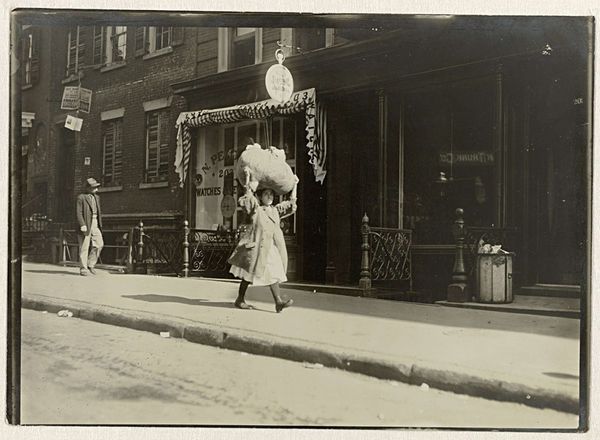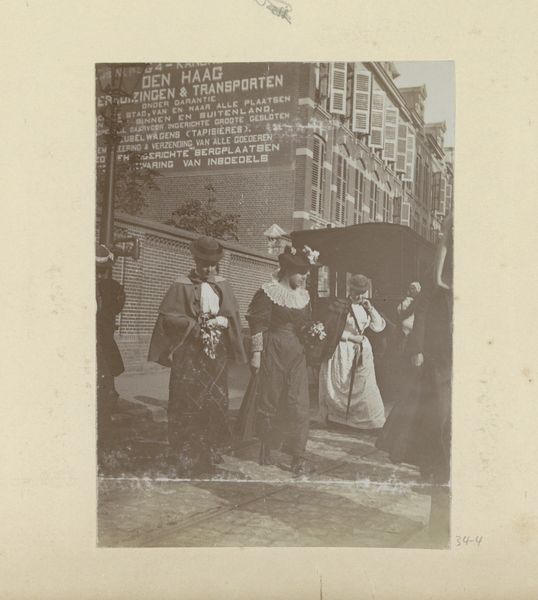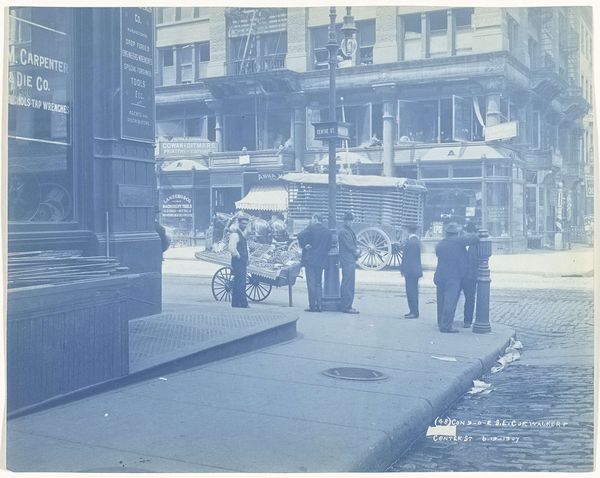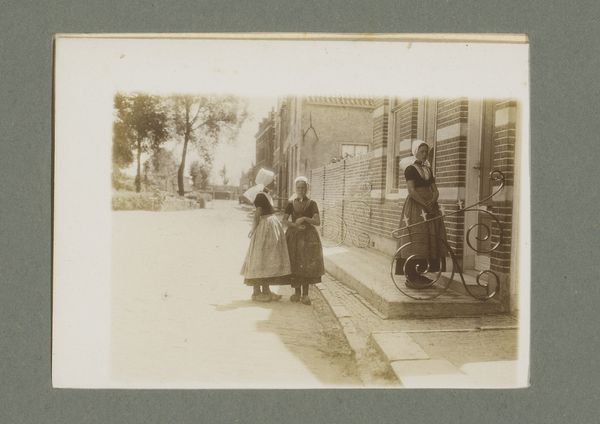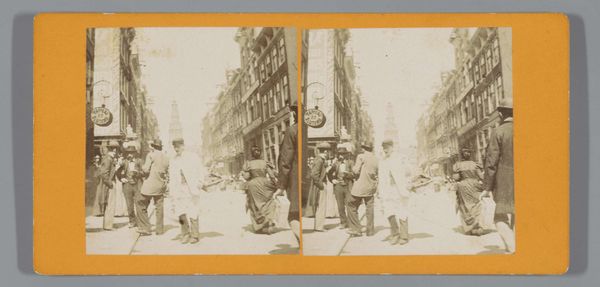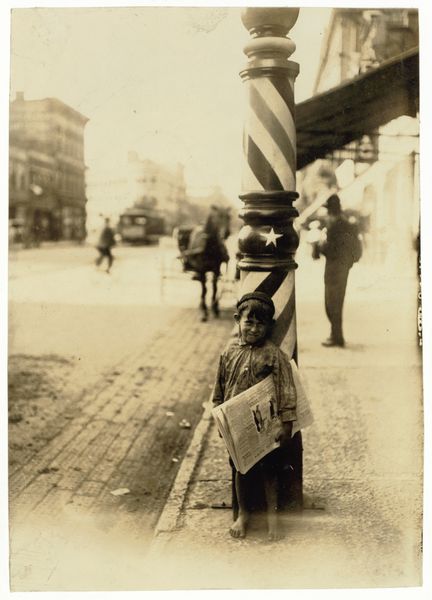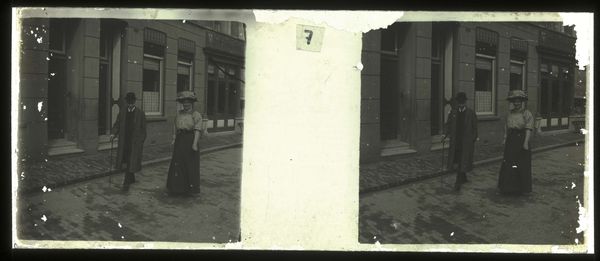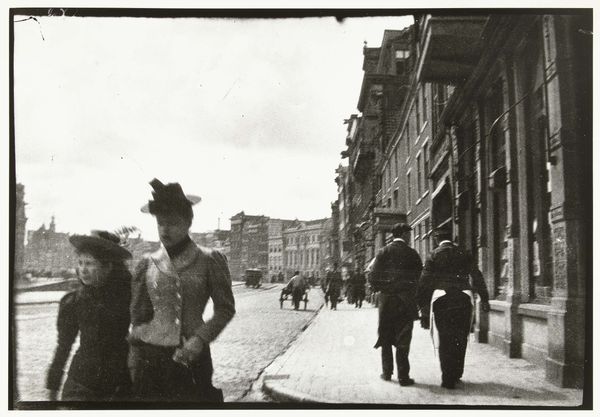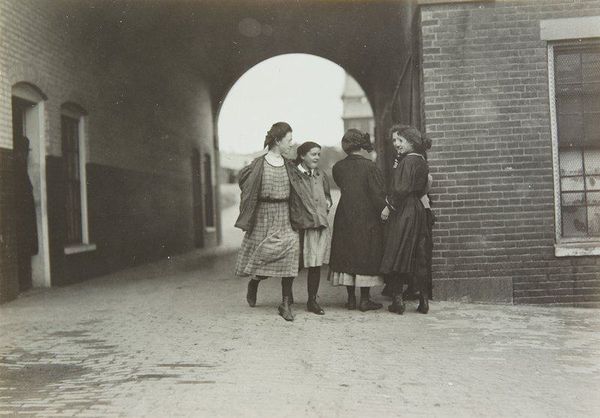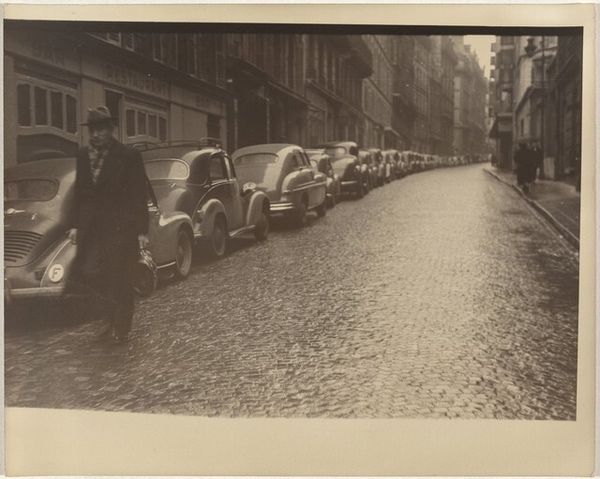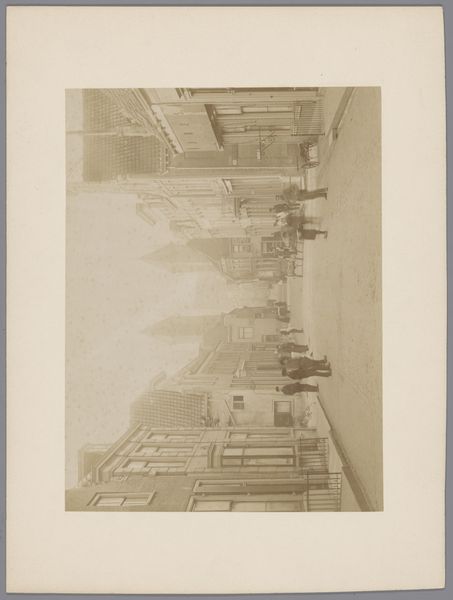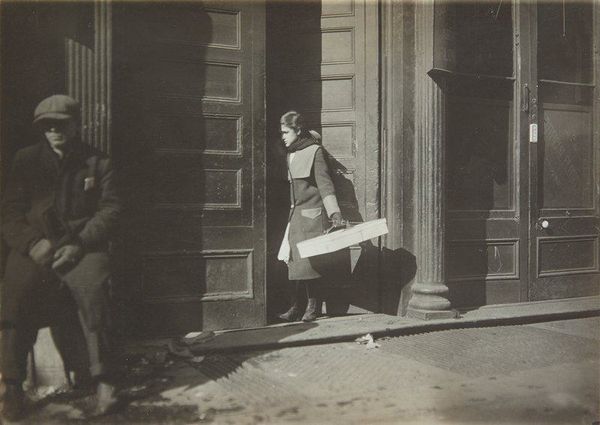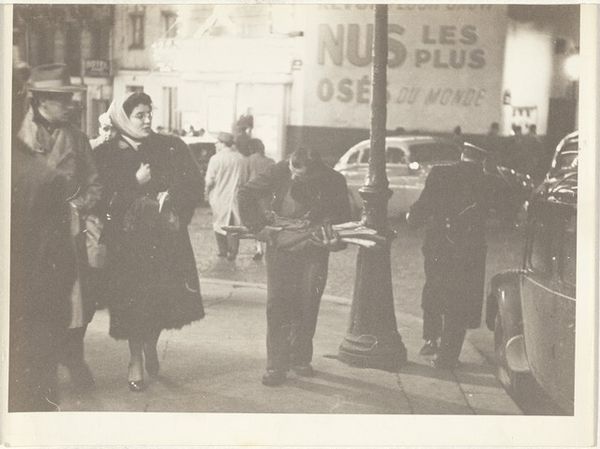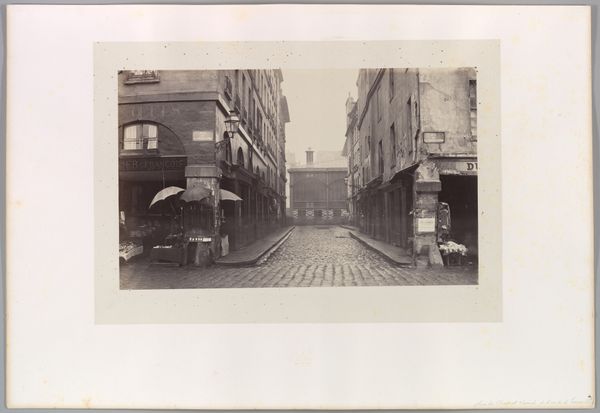
print, photography, gelatin-silver-print
portrait
print photography
landscape
outdoor photograph
street-photography
photography
gelatin-silver-print
ashcan-school
realism
Dimensions: height 114 mm, width 163 mm, height 305 mm, width 270 mm
Copyright: Rijks Museum: Open Domain
Editor: So, this is Lewis Hine’s “Newspaper Vendor,” a gelatin silver print from somewhere between 1911 and 1916. The boy’s gaze is just so intense, like he's carrying the weight of the world on his small shoulders. What do you see when you look at this photograph? Curator: I see more than just an image; I see a symbol. Consider the boy, dwarfed by the urban landscape. The newspaper he carries isn't just newsprint; it's a representation of knowledge, information, perhaps even hope. How do you interpret his connection with that fire hydrant? Editor: That’s interesting – I just thought he was leaning on it. Curator: It is physical support, yes, but consider what a fire hydrant *means*: readiness, the potential to extinguish threats. The boy, the news, the city… all juxtaposed. The newspaper signifies civic engagement and the fire hydrant protection. Do you think this photograph speaks to larger themes of resilience, duty, or perhaps even the lost innocence of childhood? Editor: I think so, now that you point that out. I hadn’t considered how the fire hydrant acts like… protection. He does seem awfully small, clinging to it. Knowing that Hine documented child labor, it feels especially poignant. It also speaks to how cities can both need and forget children. Curator: Precisely. Hine was very intentional about choosing symbols. The background figures and the trolley contribute a great deal, too, symbolizing the momentum of adults towards their lives while he seems left on the margin of it. Visual rhetoric that powerfully underscores a theme, isn’t it? Editor: Absolutely. Now, looking at it again, the boy seems both burdened and resilient. Thanks for bringing those details and connections to my attention. I have a new appreciation for the image. Curator: And I've gained a renewed perspective hearing your take on how a seemingly chance encounter echoes so many broader themes, revealing a poignant chapter of our collective history.
Comments
Hine portrayed the European immigrants who came to America at the beginning of the 20th century. Life was hard in a big city where hundreds of thousands of people were looking for ways to make a living. Italian women were employed in ‘sweatshops’, sewing workshops, where they were grievously exploited. Even children, like this barefoot newspaper boy, were sent out to earn money.
Join the conversation
Join millions of artists and users on Artera today and experience the ultimate creative platform.
